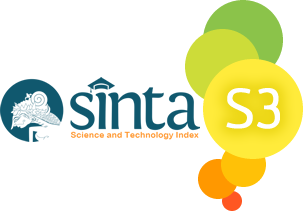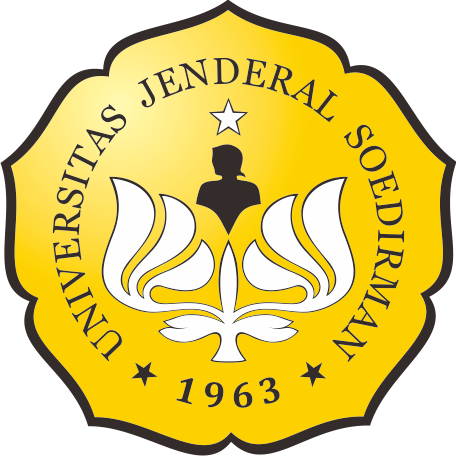ETNOBOTANI MASYARAKAT SAMAWA PULAU SUMBAWA
Abstrak
We have conducted an ethnobotany research in Batudulang Village of Batulanteh Subdistrict, Sumbawa Island, West Nusa Tenggara. This study was a direct observation method and data were collected by interview. This study aimed to determine the interaction of local community and its environment and to determine the local knowledge of useful plants. We recorded the people of Samawa utilized 147 plants, 39 were edible plants, 74 were medicinal including cosmetics plants, 12 were sources for building materials and handicrafts, and the rest of 22 were honeybee feed plants, firewood, and ritual plants. This study also revealed that the Samawa community has a local wisdom in the importance of sustainable used of the forest as a habitat for wild honeybees.
Kata Kunci
Teks Lengkap:
PDFReferensi
Brookfield HD, Padoch C. 1994. Apreciating agrodiversity: A look at the dynamism and diversity of Indegineous Farming Practise. Environment. 36 (5):6–11. https://doi.org/10.1080/00139157.1994.9929164
Cunningham AB. 2001. Applied ethnobotany: people, wild plant use & conservation. London: Earthscan Publication.
Darnaedi SY, Rodani. 1995. Kearifan budaya dalam tradisi pengobatan orang Sumbawa Barat Daya, Nusa Tenggara Barat. Prosiding Seminar dan Lokakarya Nasional Etnobotani II. Buku I. Puslitbang Biologi–LIPI, Fakultas Biologi Universitas Gadjah Mada dan Ikatan Pustakawan Indonesia. p. 29–38.
Dove MR. 1988. Sistem perladangan di Indonesia: suatu studi dari Kalimantan Barat. Yogyakarta: Gadjah Mada University Press.
Fox JJ. 1993. Comperative perpective on Austronesia houses: An introductory essay. In: Fox JJ (ed.) Inside Austronesia houses: perspective on domestic design for living. Canberra: Australian National University. p. 1–10
Hoang SV, Baas P, Kebler JA. 2008. Use and conservation of plant species in National Park: A case study of Ben In, Vietnam. Economic Botany. 62(4): 574–593. https://doi.org/10.1007/s12231-008-9056-1
Jones DT. 1997. Limonia acidissima L. In: Verheij EWM & RE Coronel (Eds.). Buah–buahan yang dapat dimakan. PROSEA Sumber Daya Nabati Asia Tenggara 2. Jakarta: PT Gramedia Pustaka Utama.
Kostermans AJGH. 1963. Notes on the vegetation of West Sumbawa (Indonesia). Symposium on the Ecology of Reserved Humid Tropical Vegetation; Kuching.
Permatasari I. 2013. Etnobotani tumbuhan bahan dasar minyak Sumbawa di Kabupaten Sumbawa Besar Provinsi Nusa Tenggara Barat (NTB) [thesis]. Universitas Islam Negeri Maulana Malik Ibrahim.
Rahayu M, Rugayah, Praptiwi, Hamzah. 2002. Keragaman pemanfaatan tumbuhan obat oleh masyarakat suku Sasak Di Taman Nasional Gunung Rinjani, Lombok-NTB. Prosiding Simposium Nasional II Tumbuhan Obat dan Aromatik. KEHATI, LIPI, APINMAP, UNESCO dan JICA. Bogor, 8–9 Agustus 2001. Hal: 116 – 123.
Rahayu M, Rustiami H, Rugayah. 2016. Ethnobotanical study of Sasak Ethnic, East Lombok, West Nusa Tenggara. Journal of Tropical Biology and Conservation. 13: 85–99.
Rench B. 1930. Eine biologische reise nach den Kleinen Sunda-Insel. Berlin: Gebruder Borntraeger.
Ruthenberg H. 1980. Farming system in the tropics. Oxford: Clarendon Press.
Telle K. 2007. Entangled biographies: rebuilding a Sasak house. Journal of Anthropology. 72 (2): 195–218. https://doi.org/10.1080/00141840701387903
Article Reads
Total: 8058 Abstrak: 1753 PDF: 6305Refbacks
- Saat ini tidak ada refbacks.

This work is licensed under a Creative Commons Attribution-ShareAlike 4.0 International License.
This website is maintained by:
Bio Publisher
The Faculty of Biology Publishing
Laman ini dikelola oleh:
Penerbitan Fakultas Biologi
Universitas Jenderal Soedirman
Jalan dr. Suparno 63 Grendeng
Purwokerto 53122
Telepon: +62-281-625865
Email: biologi@unsoed.ac.id
Laman ini menggunakan:
OJS | Open Journal System
Software pengelolaan jurnal ilmiah online. Versi yang digunakan adalah 2.4.8.0.
Metadata artikel terdaftar di:
Crossref
Agen resmi internasional pendaftaran Digital Object Identifier (DOI)
Artikel jurnal ini terindeks:








